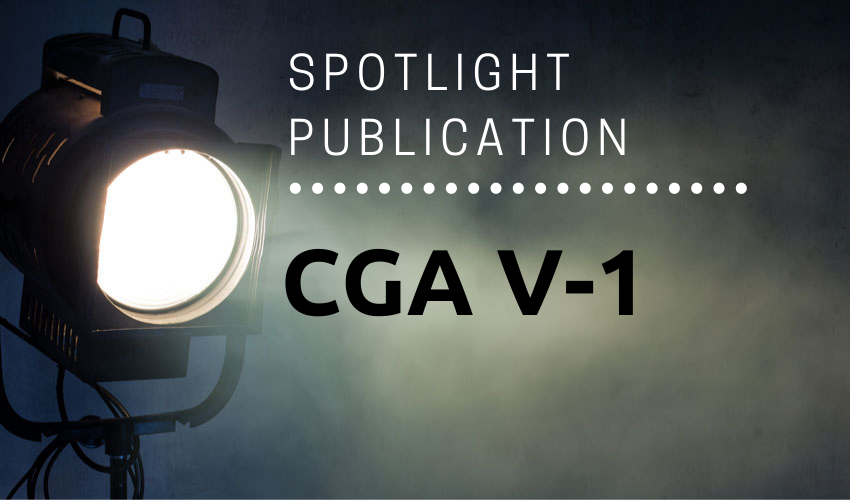CGA’s V-1 Publication Helps Minimize Risk of Hazardous Misconnections of Incompatible Gases
Article updated: August 12, 2021
In May 2021, the Compressed Gas Association (CGA) published the 15th edition of CGA V-1, Standard for Compressed Gas Cylinder Valve Outlet and Inlet Connections. This safety publication applies the combined experience and knowledge of gas producers, valve manufacturers, military services, federal agencies, and gas users to establish detailed dimensions for the manufacture of cylinder valve outlet and inlet connections.
This standard is based on a coordinated plan for cylinders with valves that are not permanently manifolded during transport and use. Standard outlet connections for respective gases are fully defined and complete in themselves. The outlet connections included in this standard are designed to minimize the possibility of hazardous misconnections of incompatible gases.
CGA V-1 is referenced by the National Fire Protection Association (NFPA) and the International Code Council (ICC).
Cylinder Valves – Overview
Cylinder valves are used on compressed gas cylinders and are opened or closed as needed during filling operations or for the withdrawal of product from the cylinder. Cylinder valves provide on/off control of the gas from the cylinder and are not intended to be used as throttling or flow control valves. Manual or remotely actuated operators (integral or attached to the valves) are used to open and close the valves.
The majority of cylinder valves are installed into cylinders using a threaded inlet connection, although some valves are welded to the cylinder.
The cylinder valve outlet connection is used to connect the valve outlet to the filler delivery system. Valve outlet connections have been standardized in CGA V-1 for different families of gases to prevent hazardous cross-connections. Additionally, the physical characteristics of the gases, particularly the flammability of the gases, are taken into consideration in determining an appropriate outlet connection.
Cylinder valves are designed for use in a wide variety of gas services and for a broad range of use pressures. Some valves are limited to a service pressure of 500 psig, while others can be rated for a service pressure of 7500 psig or higher. The intended service for the cylinder valve and the pressure range where it is typically used are integral facets of the valve outlet connections standardized in CGA V-1.
What’s New in This Edition
The 15th edition of CGA V-1, Standard for Compressed Gas Cylinder Valve Outlet and Inlet Connections, includes 129 valve outlet connections providing standards or alternate standards for 275 different compressed gases and mixtures.
This edition of CGA V-1 added 5 new connections for use on residual pressure valves (RPV):
- 346R
- 347R
- 350R
- 555R
- 680R
These “R” connections were created to standardize the connection pin lengths in order to provide consistent RPV actuation and prevent RPV damage. These connections are only intended for fill plant use and are not intended for field use.
Also in this edition of CGA V-1, connections were unchanged but gas assignments were revised for the following:
- 510
- 555
- 634
- 695
And tolerances were updated in drawings for the following:
- 540R
- 580R
- 590R
Appendix I was also updated to include design requirements and testing protocols for residual pressure valve fill connectors.
For more details about this safety standard, the full Table of Contents may be downloaded for free from the CGA V-1 publication details page on the CGA portal.


